Distinguished Lecturers 2020
The NTC is pleased to announce the appointments of Distinguished Lecturers for 2020.
Talks by NTC Distinguished Lecturers can be requested by: IEEE student branches; NTC or member Society Chapters; NTC and member Society Conferences; conferences of other IEEE Societies not members of the NTC for major plenary/keynote (based on availability of funding). Please contact the presenter directly to arrange for a presentation.
| DL Name | Topic(s) |
| Oluwaseyi Balogun | Nanometrology, Nanothermometry, and Imaging of Low Dimensional Materials using Plasmonic Nanofocusing Approaches |
| Reuven Gordon | Nanoplasmonics: Reaching Out to the Single Molecule |
| Chengkuo Lee | Toward 5G based AI + IoT (AIoT) Society Enabled by NanoEnergy-NanoSystem (NENS) Technology |
| Zhang Li | Magnetic Nanoparticle Swarm for Active Delivery |
| P M (Markondeya Pulugurtha) Raj | Heterogeneous System Component Integration with Nanopackaging |
| Seiji Samukawa* | Creating Green Nanostructures and Nanomaterials for Advanced Energy Nanodevices |
| Subramanian Sankaranarayanan* | Bridging the electronic, atomistic and mesoscopic scales in materials modeling using machine learning |
| V. R. Singh* | 1: Nano-sensor technology with IoT 2: Advanced nanosensors and systems for u-health care 3: Nano-Cancer Technology: New Diagnostic and Therapeutic Devices |
| Han Wang | 1: Black Phosphorus and Perovskite Chalcogenide Materials for mid-IR Detection and Imaging 2: Emerging Low Dimensional Material Electronic Devices for Memory and Computing |
| Qing Zhang | Roles of Semiconductor Junctions in Mechanical-Electrical Power Conversion |
| * Re-appointment for second year. | |
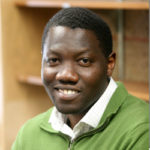 Oluwaseyi Balogun
Oluwaseyi Balogun
Associate Professor of Civil and Environmental Engineering and Mechanical Engineering, Northwestern University
Email: o-balogun@northwestern.edu
Distinguished Lecturer Talk Title: Nanometrology, Nanothermometry, and Imaging of Low Dimensional Materials using Plasmonic Nanofocusing Approaches
Bio:
Oluwaseyi Balogun received the Ph.D. degree in Mechanical Engineering from Boston University in 2006. Between 2006 and 2007, he worked as a Postdoctoral Research Fellow in the Materials Science and Engineering Department at The Johns Hopkins University, and as a Visiting Scientist at the Lawrence Livermore National Laboratory. He joined the Northwestern University faculty in 2008, where he currently holds the position of Associate Professor in the Departments of Mechanical Engineering and Civil and Environmental Engineering Departments. His research interests includes, elastic/acoustic wave propagation in periodic structures, optics-based experimental mechanics methods for materials characterization and imaging, and optical measurement of phonon transport in electronic materials.
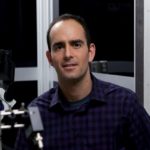 Reuven Gordon
Reuven Gordon
Dept. of Electrical & Computer Engineering, University of Victoria, Victoria, B.C. Canada
E-Mail: rgordon@uvic.ca
Web: www.ece.uvic.ca/~rgordon
Distinguished Lecturer Talk Title: Nanoplasmonics: Reaching out to the Single Molecule
Abstract:
Arthur Ashkin was co-recipient of the Nobel prize in 2018 for his work on optical tweezers; however, those conventional optical tweezers are limited to objects that are >100 nm in size. This talk will review our work on nanoaperture optical tweezers that can trap particles down to the single digit nanometer size, including proteins. I will describe how to measure the low frequency Raman modes of these particles (including proteins and DNA fragments) with high spectral resolution, as well as the THz dynamics of nanoparticles. I will emphasize recent developments in nanofabrication and some exciting biophysical problems we are studying.
Bio:
Reuven Gordon is a Professor in the Department of Electrical and Computer Engineering, University of Victoria. He has received a Canadian Advanced Technology Alliance Award (2001), an Accelerate BC Industry Impact Award (2007), an AGAUR Visiting Professor Fellowship (2009), the Canada Research Chair in Nanoplasmonics (2009-2019), the Craigdarroch Silver Medal for Research Excellence (2011), a Fulbright Fellowship (2016), an NSERC Discovery Accelerator (2017), the Faculty of Engineering Teaching Award (2017) and an JSPS Invitational Fellowship (2020). He is a Fellow of the Optical Society of America (OSA), the Society for Photographic Instrumentation Engineers (SPIE), and the Institute for Electrical and Electronic Engineers (IEEE). Dr. Gordon has authored and co-authored over 170 journal papers (including 13 invited contributions). He is co-inventor for five patents and two patent applications. Dr. Gordon is a Professional Engineer of BC. Dr. Gordon has been recognized as an “Outstanding Referee” by the American Physical Society. He has also served as conference chair for several conferences, including SPIE NanoScience + Engineering and NFO16. Dr. Gordon is an Associate Editor for Optics Express and on the Editorial Advisory Board for Advanced Optical Materials.
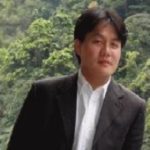 Chengkuo Lee
Chengkuo Lee
Dept. of Electrical and Computer Eng, National University of Singapore, Singapore
Email: elelc@nus.edu.sg
Distinguished Lecturer Talk Title: Toward 5G based AI + IoT (AIoT) Society Enabled by NanoEnergy-NanoSystem (NENS) Technology
Bio:
Prof. Chengkuo (Vincent) Lee received the Ph.D in Precision Engineering from The University of Tokyo, Japan (1996). He is Director of the Centre for Intelligent Sensors and MEMS and Associate Professor of ECE at National Univ. of Singapore. His work focuses on technologies with wide variety of applications in the field of MEMS and NEMS, Photonics, THz MEMS, Energy harvesters, Microfluidics and Biomedical MEMS and NEMS sensors. Prof. Lee has over 300 peer-reviewed journal publications, more than 35 US and Taiwan patents and over 9,700 citations (Google Scholar data), h-index 50 and i-10 index 239. He has held several editor roles, including Associate editor, IEEE Journal of Microelectomechanical Systems (JMEMS).
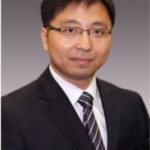 Li Zhang
Li Zhang
Department of Mechanical and Automation Engineering, The Chinese University of Hong Kong (CUHK), Hong Kong, China
E-Mail: lizhang@cuhk.edu.hk
Web: http://www.cuhklizhanggroup.com/
Distinguished Lecturer Talk Title: Magnetic Nanoparticle Swarm for Active Delivery
Abstract:
In nature, various types of swarm behaviors occur, such as a flock of birds and a swarm of ants, which stem from local communications of limited individuals. Through collective pattern formation and reconfiguration, these animals dramatically change their swarming patterns according to the environment they interact with. To date, some large-scale robotic systems can well mimic the complex swarm behaviors of natural creatures through algorithm design and wireless communication (Science, Vol. 345, 795–799, 2014). However, due to the absence of onboard processers, sensors and actuators, to create a robotic system with functional swarm behaviors at the small scales remains challenging.
Recently, my group has developed a strategy that select the optimised magnetic nanoparticle swarms (MNS) in different bio-fluids, such as blood and vitreous humor (Nature Communications, 2019, DOI: 10.1038/s41467-019-13576). The swarms reported may have great potential in medical applications, and this work is an important intermediate step from fundamental understanding of nanorobotic swarms to their clinic applications.
In this lecture, I will present the recent research progress on the design and development of MNS from the following four aspects: (i) controlled generation of reconfigurable swarming pattern; (ii) motion control of the MNS; (iii) selection strategy of the MNS in varied biological fluids; (iv) the perspective of the MNS for biomedical applications.
Bio:
Li Zhang is an Associate Professor in the Department of Mechanical and Automation Engineering (MAE) at The Chinese University of Hong Kong (CUHK). His main research interests include micro-/nanorobotics and their biomedical applications, and functional materials for sensors, actuators and practical applications. Dr. Zhang is a senior member of IEEE, who has won several awards or in the Finalist from IEEE international conferences including ICRA IROS, ROBIO and NANOMED. Since 2004 he has authored and co-authored over 200 papers, including Science Robotics, Science Advances, Nature Communications, TRO and IJRR. He won the Hong Kong Research Grants Committee (RGC) Early Career Award in 2013, and the CUHK Young Researcher Award 2017. He currently serves as an Associate Editor of IEEE/ASME Transactions on Mechatronics (TMECH), IEEE Transactions on Automation Science and Engineering (TASE), IEEE Robotics and Automation Letters (RA-L), and IEEE Open Journal of Nanotechnology (OJNANO).
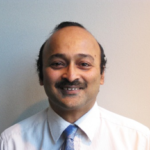 P M (Markondeya Pulugurtha) Raj
P M (Markondeya Pulugurtha) Raj
Biomedical Engineering, Electrical and Computer Engineering
Florida International University, Miami USA
E-Mail: mpulugur@fiu.edu
Distinguished Lecturer Talk Title: Heterogeneous System Component Integration with Nanopackaging
Abstract:
Heterogeneous component integration with seamless and 3D connectivity between digital, RF, analog and passive components in a single package with unlimited bandwidth at lower power is the key to realize future electronic and bioelectronic systems. This talk describes the recent nanomaterial and nanoscale component integration breakthroughs that are making heterogeneous integration a reality. The need for high power density and efficiency in mobile, servers, datacenters and automotive electronics is driving advanced packaging technologies for single-stage power conversion close to the active devices. Power passive component (inductors and capacitors) integration is the biggest bottleneck to realize such integrated power modules. Nanomagnetic inductors, high surface area nanocapacitors and innovative 3D component designs will be described. The second part focuses on material and component integration technologies for high-bandwidth 5G-6G communications. Several packaging advances are critical to realize such mm wave to THz communications. These include high-gain antenna arrays in a package with integrated power dividers and combiners, low-loss THz interconnects with substrate-integrated low-loss waveguides, integrated electromagnetic interference isolation structures between power amplifier (PA) and low-noise amplifier (LNA) interconnects and integrated nanomagnetic and nanodielectrics for nonreciprocal and tunable components. The last part of the presentation describes nanopackaging technologies to enable bioelectronic systems with seamless integration between neural recording arrays, active devices and wireless interfaces for ultra-miniaturized wearable and implantable bioelectronic systems. Nanoscale packaging for off-chip interconnections, thermal management, hermetic coatings and encapsulations will also be highlighted.
Bio:
Dr. P. M. Raj ‘s expertise is in packaging of electronic and bioelectronic systems, with emphasis on nanoscale RF, power and bioelectronic components, and active and passive integration in ultrathin embedded modules. He is an Associate Professor in BME and ECE at Florida International University, and Adjunct Professor at Georgia Institute of Technology, Atlanta. He demonstrated several electronic packaging technologies, working with the whole electronic ecosystem, which include several semiconductor, packaging and material, tool, and end-user companies. He co-lead the development of world’s first 3D glass LTE diversity module, and 3D glass antenna-integrated package module for 5G mm wave applications. He developed advanced substrate-integrated power inductors and power capacitors for integrated power modules and voltage regulators. His research led to 330 publications, which include 8 patents. He received more than 25 best-paper awards. He co-advised more than 30 MS and PhD students who are current leaders and technology pioneers in the electronic packaging industry. He is widely recognized for his contributions in integrated passive components and technology roadmapping, component integration for bioelectronic, power and RF modules, and also for promoting the role of nanomaterials and nanostructures for electronics packaging applications through IEEE NTC and EPS. He received his PhD from Rutgers University in 1999 in ceramic engineering, ME from the Indian Institute of Science, Bangalore and BS from the Indian Institute of Technology, Kanpur (1993).
 Seiji Samukawa
Seiji Samukawa
Institute of Fluid Science, Tohoku University, Sendai, Japan
E-Mail: samukawa@ifs.tohoku.ac.jp
Distinguished Lecturer Talk Title: Creating Green Nanostructures and Nanomaterials for Advanced Energy Nanodevices
Abstract:
Securing safe and cheap energy and using it effectively is a serious problem for modern society. As a solution to this, we are performing research on innovative green nanodevices. We are currently developing energy generation and storage devices, low-power-consumption devices, multifunctional nano-devices and nano-energy systems that use these devices. Manufacturing these nanodevices needs to be done precisely without damaging the nanostructures and by deriving the intrinsic characteristics of the nanomaterials and nanostructures. For the first time, such devices are made possible through the mastery of our unique intelligent nano-processes such as a super-low-damage neutral beam processes, pulsed plasma processes, and ultimate processing utilizing biotechnology.
In this lecture, we focus on bio-template and neutral beam etching fusion top-down process to realize nanoscale structures. The optical, electrical, spintronics and phononic characteristics have been already demonstrated in nanoscale structures. Our fabricated nanostructure can precisely control the transport of electron, hole, spin and phonon by diameter, height, gap and interlayer materials of the nanostructure respectively. Now, based on these results, we are trying to develop Quantum Nanostructure (QN) solar cells, QN thermo-electric conversion elements, QN Laser/LED, QN spin devices and so on.
Bio:
Prof. Seiji Samukawa conducts research on ways to generate charged particles and neutral particles, and to associate acceleration technologies in reactive plasmas, as well as research on the flow of these particles and the latest bio-nano processes. Through these efforts, Prof. Samukawa is working to develop precise nanofabrication, highly functional thin films and various kinds of surface processing technologies. His goal is to realize “intelligent plasma nano-processes” through the fusion of physical experimentation and computer simulation.
Securing safe and cheap energy and using it effectively is a serious problem for modern society. As a solution to this, he is performing research on innovative green nanodevices. Prof. Samukawa is developing power generating devices, storage devices, low-power-consumption devices, multifunctional nano-devices and nano-energy systems that use these devices. To manufacture these nanodevices, it is necessary to be able to do so precisely without damaging the nanostructures and to derive the intrinsic characteristics of the nanomaterials and nanostructures. For the first time, such devices are made possible through the mastery of our unique intelligent nano-processes such as a super-low-damage neutral beam processes, pulsed plasma processes, and ultimate processing utilizing biotechnology.
 Subramanian Sankaranarayanan
Subramanian Sankaranarayanan
Argonne National Laboratory, Argonne, IL USA
E-Mail: skrssank@anl.gov
Distinguished Lecturer Talk Title: Bridging the electronic, atomistic and mesoscopic scales in materials modeling using machine learning
Abstract:
Recent advances in machine learning (ML) and data science algorithms, along with high performance computing (HPC) capabilities, present unique opportunities to address cutting edge problems in material science. In parallel, modern supercomputers together with the availability of highly scalable atomistic simulation codes have begun to revolutionize the modeling and computational analyses of materials. Molecular dynamics (MD) is one such powerful technique, which has a broad user base. There are various flavors of MD from the highly accurate ab initio molecular dynamics (AIMD) to semi-empirical atomistic MD to more computational efficient coarse-grained (CG) models. There is still a substantial gap between AIMD, which are computationally intractable for large systems, and those based on classical force fields (atomistic and CG) that rely on pre-defined functional form for inter/intra atomic/bead interactions, which inherently limits their ability to capture physics for complex interfaces. This talk will focus on our machine-learning framework that bridges this gap by combining the accuracy and flexibility of electronic structure calculations with the speed of classical potentials. This framework enables accurate prediction of inter-atomic forces and thereby allow high fidelity dynamical and statistical simulations of reactive interfaces, properties and functionalities of new hybrid materials, as well as pathways and mechanisms of their operando synthesis and assembly.
Bio:
Subramanian (Subbu) Sankaranarayanan is one of the most creative computational materials scientists of his generation. First, he has pioneered large-scale molecular dynamics (MD) techniques to understand macro-scale tribological phenomena, using materials engineered at the nanoscale. Examples were his prediction of superlubricity at engineering length scales using hybrid lubricants, and its experimental confirmation in nanoscale diamond-graphene composites (Science, 2015); and the demonstration of self replenishing carbon tribofilms catalytically generated from lubricants (Nature 2016). Subbu was the intellectual driver for both these efforts. A second area is his recent work in combining first principles physics with machine learning for materials discovery. Force field development for MD historically can take months to several years while being limited to specific materials systems. Subbu has shown that machine learning approaches can dramatically bring this down to days to weeks–he has recently used this approach in the study of diverse materials to predict with very high accuracy properties related to thermal conductivity to catalysis to fracture mechanics (J. of Phys. Chem. and others 2015 onwards). He is a pioneering computational materials scientist of his generation with a masterful grasp of materials science, physics, computing, and machine learning.
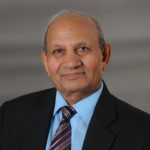 Prof. Ved Ram Singh
Prof. Ved Ram Singh
National Physical Laboratory (NPL), New Delhi, India
E-Mail: vrsinghieee@gmail.com
Distinguished Lecturer Talk Title(s):
1: Nano-sensor technology with IoT
2: Advanced nanosensors and systems for u-health care
3: Nano-Cancer Technology: New Diagnostic and Therapeutic Devices
Abstract: Nano-sensor technology with IoT
The interconnection of nanosensors and nanodevices with Internet has led to development of next generation developments based on Internet of things, IoT. Nanotechnology sensors with IoT are providing new solutions in various fields. A nanosensor is an improvement in sensor technology, which is based on recent advances in nanotechnology, such as nanowires, nanotubes and nanopores. The paper includes the recent application of nanosensor technology in the oil & gas industries, agriculture, space explorations and healthcare. The focus of the paper is to review the recent trends and challenges for the use of nanosensor with IoT. The paper gives a review of the significant contribution of worldwide research agencies focused on nanosensor with IoT.
In the paper, advanced nano-sensors, bio-devices and biomedical systems are discussed for ubiquitous health care applications. Point-of care.(POC) devices and bio-chips based sensors are described with design and fabrication aspects and their quick bedside applications. Design and development of nano-bio- sensors and biomedical instrumentation systems are presented for environmental control for better health care. Case studies of cancer nano-technology and telehealth care of patients, particularly old age people living in isolated remote areas, are given. In addition, various applications of nanosensor in oil & gas industries, space and agriculture will be discussed.
Bio:
Prof. (Dr) V.R.Singh, Ph.D. (Electrical Engg), IIT-Delhi and Life Fellow- IEEE and LF-IETE, LF-IE-I, LF-ASI/USI and LF-IFUMB/WFUMB, has over 37 years of research-cum-teaching experience in India and abroad (Univ of Toronto-Canada, KU Leuven- Belgium, Korea Univ, South Korea, TU-Delft, Netherlands, Univ of Surrey, UK, and others). He has been at National Physical Laboratory (NPL), New Delhi, as a Director-grade-Scientist/Distinguished Professor and Head, Instrumentation, Micro/ Nano Technology, Sensors, Biomedical Measurements and Standards.
He is currently President of Acoustical Society of India and Vice-President of Ultrasonic Society of India, and Chair, IEEE IMS/EMBS -Delhi. Presently, he is Director-cum-Advisor at PDM University, NCR-Delhi.
He has over 350 papers, 250 talks, 260 conf papers, 4 books, 14 patents and 30 consultancies to his credit. Under his guidance, 30 PhD scholars have earned PhD degree while others are working with him.
Dr. Singh has been the Associate Editor of IEEE Int Sensor Journal (2010-2016), Associate Editor of IEEE Transactions on Instrumentation and Measurements and Regional Editor of Int Journal of Biomedical Engineering and Technology (IJBET). Apart from this, he is on Editorial/Reviwer Boards of other journals. like Sensors & Actuators (Switzerland), IEEE Trans on Engg in Med and Biology , J Computers in Electrical Engg (USA), J.Instn Electr Telecom Engrs, J.Instn Engrs -India, Ind J Pure & Appl Physics, J.of Instrm Soc Ind, J. Pure & Appl Ultrasonics, J. Life Science Engg, etc.
His main areas of interest are sensors and transducers, instrumentation, Micro/Nano technology,biomedical standards, computer modeling, Internet of things and simulation, ultrasonics/medical acoustics, POCT devices, nano neuro-sensors/implants, nano-cancer-technology, cancer hyperthermia, tissue characterisation, micro- lithotripsy, WSN and u-health care.
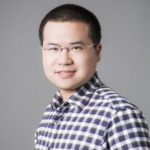 Han Wang
Han Wang
Robert G. and Mary G Lane Early Career Chair Professorship
Department of Electrical and Computer Engineering
University of Southern California
E-Mail: han.wang.4@usc.edu
Web: http://hanw.usc.edu
Distinguished Lecturer Talk Title(s):
1: Black Phosphorus and Perovskite Chalcogenide Materials for mid-IR Detection and Imaging
2: Emerging Low Dimensional Material Electronic Devices for Memory and Computing
Abstracts:
1: Black Phosphorus and Perovskite Chalcogenide Materials for mid-IR Detection and Imaging: Recent progress in new narrow bandgap material discovery such as black phosphorus (BP) and perovskite chalcogenide materials including barium titanium sulfide (BaTiS3) open the door to a new generation of photonic materials for mid-infrared sensing and imaging. High mobility, narrow gap BP and BaTiS3 thin film have shown promising properties for mid-infrared and long wavelength infrared optoelectronics. Furthermore, their low-symmetry crystal structures allow for the realization of polarization sensitive electro-optical detection in the mid-infrared range. Here, I will present our work in understanding the fundamental electronic and optical properties of BP and BaTiS3, including using the scanning ultrafast electron microscopy technique to obtain spatial-temporal imaging of the real-time carrier dynamics. Our recent demonstration of polarization sensitive mid-IR detector and the development of mid-IR focal-plane array will also be presented. Technological potential and future impacts of these novel mid-IR materials and devices will be discussed.
2: Emerging Low Dimensional Material Electronic Devices for Memory and Computing: Low dimensional materials offer a rich array of unique physical properties that are promising for developing a new generation of electronic devices for beyond von-Neumann computing hardware. In this talk, I will discuss our recent work in developing atomically-thin resistive memory devices based on low dimensional materials that can achieve ultralow power operation at the sub-femtojoule level. Our work on developing low dimensional material based phase transition oscillatory neuronal devices will also be discussed. Due to their atomically confined geometry, such oscillatory devices exhibit pronounced stochastic feature with dynamically tunable distribution parameters closely resembling biological neuron spiking. Furthermore, the demonstration of the low power hardware implementation of new computing schemes such as Boltzmann machine and stochastic Hopfield network based on these novel devices will be presented.
Bio:
Han Wang is an Associate Professor in the Department of Electrical and Computer Engineering at the University of Southern California and the holder of the Robert G. and Mary G Lane Early Career Chair. His research interests include the fundamental study and device innovation in electronics and photonics technology based on emerging nanomaterials for sensing, computing and energy applications. His work has been recognized with numerous awards including the IEEE Nanotechnology Council Early Career Award in 2019, the Army Research Office Young Investigator Award in 2018, the National Science Foundation CAREER award in 2017, USC Viterbi Junior Faculty Research Award in 2018, the IEEE International Electron Device Meeting (IEDM) Roger A. Haken Best Paper Award in 2012, Massachusetts Institute of Technology Jin-Au Kong Best Doctoral Thesis Award in 2013, and the Best Paper Award in International Conference on Compound Semiconductor Manufacturing Technology (CS MANTECH) in 2010.
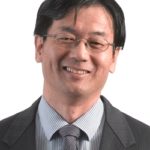 Qing Zhang
Qing Zhang
School of EEE, Nanyang Tech Univ, Singapore
Email: eqzhang@ntu.edu.sg
Distinguished Lecturer Talk Title: Roles of Semiconductor Junctions in Mechanical-Electrical Power Conversion
Abstract:
Recent advance in DC electric generators has demonstrated that the new generators are of several advantages over traditional electric generators that are well known to us. In these new generators, DC electric power is converted from mechanical power through either semiconductor junction modification by mechanic impact or dynamic junction by sliding one semiconductor/metal electrode on the other. The short circuit current is determined by generation rate of electrons and holes at the contacted surfaces, while the open circuit voltage is determined by the chemical potential difference of the two electrodes. In the talk, I shall review recent advances in the generators and discuss the mechanisms of electron/hole generation and transport in the devices. Advances in fundamental semiconductor physics and perspectives and technical challenges will be highlighted.
Bio:
Qing Zhang is an associate professor in the School of Electrical and Electronic Engineering, Nanyang Technological University, Singapore. His research interests include carbon based materials and electronic devices and carbon/silicon related thin films, etc. Currently, his attention focuses on carbon nanotube based devices and fundamentals, CVD diamond and diamond-like carbon films based devices, etc. He has published 170 peer-review scientific papers in pre-eminent journals and presented his research results in 150 conferences and workshops. He is a fellow of Singapore-MIT alliance. He is the chairman for Symposium of Nanodevices and Nanofabrication in International Conference on Materials for Advanced Technologies (ICMAT) 2005, ICMAT 2007, ICMAT2009 and ICMAT2011.
[24-Mar-20]
